- Home
- Colleen McCullough
Life Without The Boring Bits Page 4
Life Without The Boring Bits Read online
Page 4
Were Christ abjectly poor, he would not have presented such a threat to the Sanhedrin; his declaration of kingship would have been dealt with in other ways than a slave’s death. If he was in truth of the House of David and backed by a wealthy family having considerable power, the threat was urgent. He had to be dealt with immediately, before the family could rally.
When Christ was crucified, the eight legionaries who made up an octet in a century threw dice for his garments. If that is true, it speaks volumes.
First of all, he seems to have been given no opportunity to change his clothes between his sentence and his execution. Why was that? The most logical answer is that a crucifixion death had already been scheduled for two slave criminals. The Romans were very efficient; crosses they had, stored in the Antonia. A third cross came out for Jesus Christ, detained overnight in the Antonia without opportunity to see anyone or send any messages. No doubt the Sanhedrin used the time to spread the “truth” — Jesus Christ was a slave going to a slave’s death. Certainly those who had cheered him and laid palm fronds before him were not present at his crucifixion; that was a small crowd, his nearest relatives from his mother to his brothers and sisters, some of his close friends, men and women.
If he had no opportunity to change his clothes, he cannot have been flogged hard enough to break the skin and ruin his tunic with blood. There were no enzyme laundry powders in existence, nor even soap; clothing was washed in a fountain or stream and pounded with stones to loosen the dirt. Nor could the thorns in his crown have done much damage; the blood, flowing profusely from scalp wounds, would have dripped on to his tunic.
Secondly, his clothing — loincloth, tunic and stola — must have been worth having to a legionary. The garb of a man going to crucifixion soaked in blood would have been incinerated as unwearable, unsellable. Legionaries were paid, they weren’t poor.
Whether Christ’s clothing was that he wore for his hearing before Pilatus or a new, fresh set, it was expensive and unmarked.
Thirdly, it was possible that Christ’s clothing was purple in color. When they existed, Roman sumptuary laws were directed at Tyrian purple, so dark it was almost black, yet shot with rich, plummy highlights. Not a color a Roman legionary would find very eye-catching, whereas ordinary purple he would love.
Fourthly, the tunic would have needed to be properly cut and tailored to appeal — darts to define the waist and set-in sleeves — the stola capacious — and the loincloth made, as they were, with some resemblance to modern underpants. They would have been of wool, not unenviable linen; weavers in an ancient era could produce exquisitely fine woollen fabrics, semi-transparent or as sleek to the feel as modern top quality suiting. Sheep kept for wool wore supple kidskin jackets to keep the wool creamy-white in color and free from burrs and detritus.
There is a Christian tendency to regard the casting of lots for Christ’s garments as evidence of Roman depravity; whereas the truth is that much of a legionary’s life was boring in the extreme; as indeed would this unusual duty have been. I imagine few crucifixions happened. This day’s may have been the year’s total to date. Dice were the best way to while away the time. Not many gambled their pay; most dice were cast out of natural curiosity as to how the ivory cubes would fall, and who had the luck that day. The pot was as likely to be pebbles. To have the chance to play for something worth winning was rare, so Christ’s clothing was an unexpected bonus. No matter what its color, that says it was fine, not the garb of a poor man. Nor ruined by blood.
I discount the story of Barabbas as apocryphal. Pontius Pilatus was a Roman governor, and such men did not turn a solemn event into a crowd-pleasing circus; there were games for that.
It is also highly likely that once Jesus Christ left his audience chamber, Pilatus had nothing more to do with his death. It was more likely to be up to his subordinates to decide when and how Christ would die, and if there were other slaves scheduled for death, the tidy bureaucratic mind saw the solution immediately: all together, as scheduled for the other two.
The Gospels were written in Greek for a Greek-speaking congregation that had no love for either Romans or Jews. Orally transmitted events by definition cannot be rigidly policed; the early Church was rife with doctrinal argument and more influenced in the main by Paul than by Jesus Christ the man. The Gospels were an attempt at the history of Jesus Christ the man, whose life was, unfortunately, not appreciated as the product of its times.
A hundred years down the road, crucifixion was a commoner death and not confined to slaves — the reason why, in all likelihood, the slave question never arose. Converts were not only more numerous, but also of a higher social status, and the interpretation of Christ’s teachings was becoming more intellectual. Some parts of the Gospels received scant theological attention, as they neither affected nor influenced the thinking of Christian bishops, beginning to thrust out feelers toward debate on Transubstantiation and the Trinity as well as what Christian living should consist of in terms of ceremony and ritual.
Why weren’t Christ’s legs broken? Who decreed it?
Under ordinary circumstances those who were crucified begged to have their legs broken, as it hastened death by literal days. A man tied to a cross by his arms was provided with a small, blocklike shelf on which he could rest his feet, thus taking the bulk of his weight on his feet. What killed him eventually were thirst and exposure to the elements. Perhaps three days. But if his legs were broken, all his weight subsided into his trunk and he was unable to expand his lungs sufficiently to breathe. What killed him was suffocation. Perhaps three hours.
It seems to me that the Sanhedrin would infinitely have preferred broken legs; they had no reason to want an articulate Jesus Christ on their hands for several days. Yes, he would cease to speak lucidly at the end, but he was a man in the full flower of his strength, and he wouldn’t give in to death easily. But once the Roman machine took over, the Sanhedrin had no power to influence the grinding of its wheels. They could intimidate the Prefect, yes, but had no leverage whatsoever with his minions, unknown to them. One has to presume that Christ himself chose not to have his legs broken — but whom did he ask? I inclined to think it was Pilatus, but after long thought, I believe it was a choice could only be made at Golgotha, of the head legionary. The man probably thought him mad, but if that was what he wanted — well and good.
Though Christ couldn’t fight against his death sentence, if he still had the use of his tongue after he was hung upon his cross, Christ could speak out. Not against the Sanhedrin or Herod Antipas, but to voice the ideas he conceived and perceived as absolutes: in his death he could die for all humanity did he have the breath to proclaim it. His suffering would be to atone with God for the sins of men, and thereby save them.
This he did — but only for three hours. Either in fact his legs were broken and he died exactly on time, which didn’t get a mention in the Gospels, or at Roman instigation his life was terminated on time by a pilum spear thrust through the chest wall. This termination most likely came as the decision of the chief legionary, either fed up with this duty or moved by pity, as was his right as supervisor of the triple crucifixion. Who was to gainsay him? The weather had turned bad, there was a minor earth tremor, and it had been a tedious day, garments notwithstanding.
But Jesus Christ had lived on his cross long enough.
The small crowd was docile and well behaved. And those who were present carried his last messages faithfully as they disseminated to hold aloft the torch he had lit. Inspired, they proved effective and ardent torch bearers. Peter must have spoken good Greek, to have traveled as far as he did if indeed Christian history is right. So must others among them. They were not untutored oafs, bucolic ignoramuses. The pity of it is that as time went on women were subtracted from the Christian equation, though Christ had treated them as equals. The virgin birth held sway only because it turned Mary into a non-woman, a femunculus. Enough said. The place of women in religions is a sore point with me.
&nbs
p; Outside every locus of population larger than a village was the necropolis, in the least intrusive corner of which were the lime pits. In these the bodies of those who could not afford to pay for a funeral were thrown, to be covered with quicklime and soil. And there the bodies of Jesus Christ’s two fellow condemned were tossed. To go to the lime pits was an appalling fate: as a result, all sorts of lowly, including slaves, contributed a coin or two every so often to a burial club. It was one of the earliest examples of a time-payment contract.
Such was not the fate of Jesus Christ. His body was given, probably on the tendering of a paper, to some persons, including women, who wrapped it in a fine shroud and interred it in the costly private sepulchre belonging to one Joseph of Arimathaea. Three days later the women found the stone sealing the tomb rolled off, and the tomb itself empty. Soon it was spreading at an incredible rate that Christ had been seen alive, walking and talking. At the end of forty days he disappeared, not to be seen thereafter.
The truth or otherwise of this doesn’t matter. Christianity is a religion of blind faith, not to be questioned in its essence, for all that ostensibly good Christians have been questioning its essence for two thousand years. Did they not, there would be but one kind of Christianity, whereas the kinds are legion.
To me, it is of no moment whether Jesus Christ the man lived in the knowledge of his godhead with every nanosecond of that life already cemented in his mind, or whether he seized what came with no foreknowledge, just like the rest of us. Immaterial.
What set me off was a valid question: why was Jesus Christ given the death of a slave?
How real the Sanhedrin’s fears about Jesus Christ were is hard to tell two thousand years later, but certainly their behavior during the hearing before Pontius Pilatus says that they were terrified of a living, breathing Christ. For all we know today, Christ’s power and influence over the common people may have been formidable indeed; seen from the ivory tower of seventy-one men entrenched in their function and implacably opposed to change, a living Christ loomed as disaster. Were they correct in regarding him thus? To their way of thinking, yes.
He had to be put down. If in putting him down they could simultaneously discredit him, all the better.
I have concluded that the reasons behind Christ’s crucifixion death were threefold: religious, political, and social. An impressive Judaic heresy was a religious threat; a man believed to be the King of the Jews was a political threat; and that man’s popularity among the common people was a social threat.
What more effective device to achieve the Sanhedrin’s ends in Jerusalem in 33 AD was there than the death of a slave?
MIDSOMER NO MISNOMER
Why on earth is Midsomer Murders so successful? In a fabulous British whodunit world that includes series as brilliant as Dalziel & Pascoe and Lewis and Waking the Dead to name but three out of many, M.M. has labored plots and unbelievable characters. It’s a box of chocolates. Yet for longevity and loyal fans, it puts even the CSI series in the shade, rolling on year after year after year. I am way behind at Series 10, but I have no trouble casting my mind forward to Series 49, released in 2040.
Scene: What looks like Anne Hathaway’s cottage in spring. A large camera crew is positioned behind the hollyhocks and a decapitated body lies on the doormat; its head sits on the letterbox.
From a cute little shed made of wattled withies emanates a soft “Brrr-clank! Brrr-clank!” noise.
A man in frayed clothes rushes down the pebbled path between heart’s-ease, monk’s-hood and baby’s-breath, and reaches the cute little shed, panting painfully.
“He’s dead this time, Mr. True-May, sir, honest he is! He has fallen off the twig, he is no more, he’s gone to that big cop shop in the sky, he’s an ex-policeman! What do I do?”
The producer thrusts his head farther out of the bionic iron lung in which he lives; it has enabled him to survive for 183 years, and he’s still going. The cute little shed hides the bionic iron lung and has been designed to fit in no matter what outdoor location M.M. might be using for a shoot.
“Put the facsimile plastic mask on him, 137, blow him up with helium, and use the new kid with the great Nettles voice,” True-May orders between the “Brrrclank!”s of his apparatus.
“Sir, even dead he’s past it! Whatever the oncologist did on his last visit, Superintendent Barnaby’s joints have locked stiffer than a dicky on a double dose of Dynamix.”
“Oh, bugger! Send on his doppelganger.”
“Sir, I can’t! He died of old age last Tuesday.”
“Shit!”
One-three-seven looks suddenly inspired. “Sir, sir! Mr. True-May, I’ve found the answer!”
“What answer, young whipper-snapper 137?”
“A perfect Barnaby, sir, only ninety-nine years old.”
“Splendid, 137, splendid! You’ll get an extra tuppence in your pay packet this year. Walk him through the scene.”
“Um — wheelchair him through, sir. He’s gaga.”
“So’s Barnaby, that’s perfect. Expect an extra fourpence.”
It really does begin to trigger weeny fantasies like the above. Our Joyce Barnaby looks a lot sourer than she used to, and in Series 10 it’s obvious that sex is off the Barnaby marital menu — if it were ever on, that is. Joyce has started to wear Tom’s pajamas, supplemented by ear plugs and an eye mask. Her waist is disguised by a jacket, but she’s spending more on pricier clothes. The daughter, Cully, grows older, no thinner on the hips and thighs but scrawnier in the face, and the viewer rather gathers that Cully’s acting career has foundered, in which case she is a drain on the government by living on Welfare. However, Series 10 sees a serious boyfriend — the manager of a rock ’n’ roll band, yet. Where did Joyce and Tom go wrong as parents?
As for Tom Barnaby — um, well … He’s been a chief inspector for ten years, so a promotion to superintendent must be just around the corner. Unless that too requires a written examination, and Tom keeps failing it?
Q. How do you deal with a recalcitrant sergeant? Be thorough.
Q. How many murders a day do you solve? Be honest.
Q. How many murders a day do you think you could solve? Be as ambitious as you like, but don’t forget the corpse in the field between Midsomer Mere and Midsomer Marshmallow.
Q. Draw in the location of all public toilets in Causton on a freehand map. Be specific. Extra marks will be awarded for artistic ability but cartography will get you nowhere.
I’m getting ahead of myself.
What distinguishes M.M. from its rivals is its relatively huge American audience, but there are reasons for that. Brian True-May, who retains the title of producer against all comers, nutted out the correct formula, something no one at the BBC was smart enough or egalitarian enough to do.
First item on the True-May list: no thick regional accents and, by and large, good diction. This means Americans can understand most of what is said. You can’t hope for that with Dalziel, though Lewis, with the extraordinary Laurence Fox as sidekick, would succeed were it not so intellectual. Big TV success demands low-brow, no matter what the nationality. The second item Mr. True-May stipulated, I speculate, was some degree of Americanization, so that the cast say “Yeah!” and “Hi!” and call a torch a flashlight. There are times, I add, when this leads to fluffs that must have the Americans in fits of laughter.
Sometimes I think that a great deal of the problem is due to the Americans involved, who, I speculate, belong to a tight little klatch of L.A. television moguls. And L.A. television moguls are utterly ignorant of how a native of Tennessee or North Dakota or Vermont lives, let alone any Britisher. So when we non-Americans watch an American program, it is essential that we keep the ignorance of the producers about their own country firmly in mind. Vermonters or Tennesseeans must grow furious.
I digress. Mr. True-May moved from his verbal to his visual approach, and declared a theme of English village life as remote from a real English village as L.A. is from Waterbury, Connecticu
t. A decision having every advantage. No filming in big cities. A signpost amid thick trees at night turns the location into anywhere from Hong Kong to the foothills of the Himalayas. PUDONG AIRPORT 3K and it’s Shankers. KHYBER PASS 10K and it’s dangerously close to the Taliban. I adored the Chinese touch at the PUDONG AIRPORT 3K sign: two small men pedaling bicycles. But ninety-nine per cent of the locations are the villages of Midsomer, a fictitious county stuffed with thatch, half-timber, stone and Georgian red brick as its architectural theme. In Midsomer, it’s charming if it can’t be pretty, but usually it’s both. The difference between a town and a village? Easy! In a town, the village green has been tarred over and transformed into a huge and very ugly parking lot.
Now, Mr. True-May obviously reasoned, what would Americans most love to see? And top of his list is at least one shot of people riding horses with tiny English saddles: kids riding fat ponies, women riding fat hacks, men riding fat hunters. And oh, please, as often as possible, a horse-and-hounds cross-country hunt! As the fox is now protected, hunts are permissible. Do they use an electric fox, like the electric rabbit at a greyhound track? A Japanese prototype robot fox? A toddler in a fox suit?
Village greens must be enlivened by a cricket match, of course. Hint: always a match, never a game. Games are against, matches are between.

 The October Horse: A Novel of Caesar and Cleopatra
The October Horse: A Novel of Caesar and Cleopatra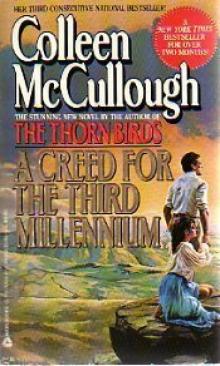 A Creed for the Third Millennium
A Creed for the Third Millennium An Indecent Obsession
An Indecent Obsession The Thorn Birds
The Thorn Birds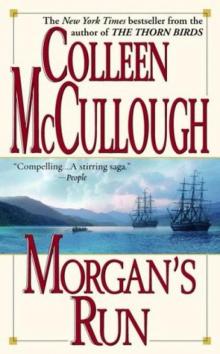 Morgan's Run
Morgan's Run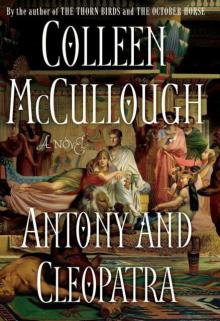 Antony and Cleopatra
Antony and Cleopatra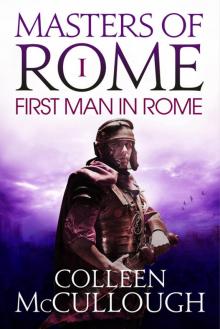 The First Man in Rome
The First Man in Rome Caesar
Caesar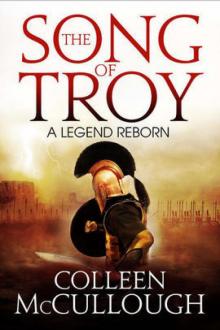 The Song of Troy
The Song of Troy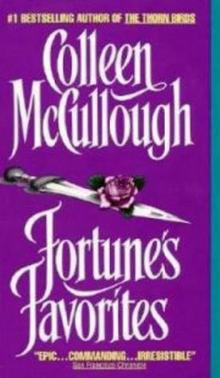 Fortune's Favorites
Fortune's Favorites The Touch
The Touch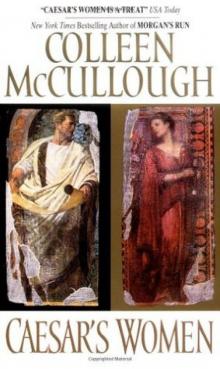 Caesar's Women
Caesar's Women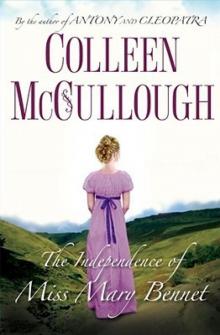 The Independence of Miss Mary Bennet
The Independence of Miss Mary Bennet The Grass Crown
The Grass Crown Tim
Tim Bittersweet
Bittersweet Angel
Angel 3. Fortune's Favorites
3. Fortune's Favorites Sins of the Flesh
Sins of the Flesh 2. The Grass Crown
2. The Grass Crown Life Without The Boring Bits
Life Without The Boring Bits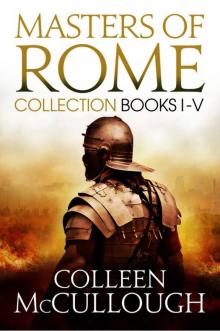 Masters of Rome Boxset: First Man in Rome, the Grass Crown, Fortune's Favourites, Caesar's Women, Caesar
Masters of Rome Boxset: First Man in Rome, the Grass Crown, Fortune's Favourites, Caesar's Women, Caesar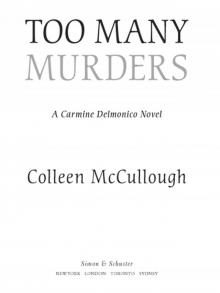 Too Many Murders
Too Many Murders 1. First Man in Rome
1. First Man in Rome On, Off
On, Off 5. Caesar
5. Caesar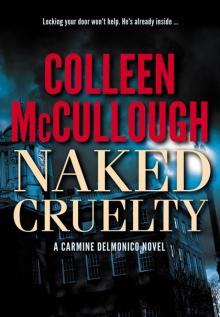 Naked Cruelty
Naked Cruelty 6. The October Horse: A Novel of Caesar and Cleopatra
6. The October Horse: A Novel of Caesar and Cleopatra